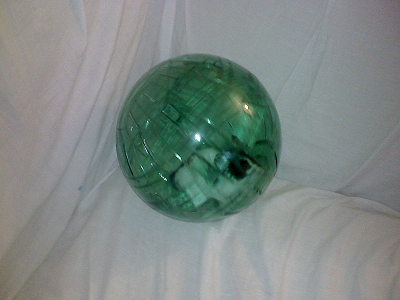Page 1 of 1
APOD: N63A: Supernova Remnant in Visible... (2019 Dec 11)
Posted: Wed Dec 11, 2019 5:06 am
by APOD Robot
 N63A: Supernova Remnant in Visible and X-ray
Explanation:
N63A: Supernova Remnant in Visible and X-ray
Explanation: What has this supernova left behind? As little as 2,000 years ago, light from a massive stellar explosion in the
Large Magellanic Cloud (LMC) first reached planet Earth. The
LMC is a close galactic neighbor of our
Milky Way Galaxy and the rampaging
explosion front is now seen moving out - destroying or displacing ambient gas clouds while leaving behind relatively dense knots of gas and dust. What remains is one of the largest
supernova remnants in the
LMC: N63A. Many of the surviving dense
knots have been themselves compressed and may further contract to form new stars. Some of the resulting stars may then explode in a
supernova, continuing the cycle.
Featured here is a combined image of N63A in the
X-ray from the
Chandra Space Telescope and in
visible light by
Hubble. The prominent knot of gas and dust on the upper right -- informally dubbed the
Firefox -- is very bright in visible light, while the
larger supernova remnant shines most brightly in X-rays.
N63A spans over 25
light years and lies about 150,000 light years away toward the southern
constellation of
Dorado.
Re: APOD: N63A: Supernova Remnant in Visible... (2019 Dec 11)
Posted: Wed Dec 11, 2019 6:20 am
by Boomer12k
I was surprised... which IS easy to do... that at only 2000-5000 years old...it is 25 light years in diameter. But considering the Crab Nebula is only 965 years old...at 11 light years in diameter, I guess it makes some sense...I just thought it would have been smaller for some reason...
The Firefox looks like he is in distress... no doubt... big explosion... lots of Shock...
:---[===] *
Re: APOD: N63A: Supernova Remnant in Visible... (2019 Dec 11)
Posted: Wed Dec 11, 2019 8:49 am
by madtom1999
I'm guessing the star is near the RH of the firefox. If is is then are we just seeing X-rays from the bubble that it approaching us and if so does that mean the X-rays tend to be sent in the direction of the expanding gas cloud?
Re: APOD: N63A: Supernova Remnant in Visible... (2019 Dec 11)
Posted: Wed Dec 11, 2019 11:17 am
by neufer
madtom1999 wrote: ↑Wed Dec 11, 2019 8:49 am
I'm guessing the star is near the RH of the firefox. If is is then are we just seeing X-rays from the bubble that it approaching us and if so does that mean the X-rays tend to be sent in the direction of the expanding gas cloud?
The brightness of the X-rays from
the sides of bubble would suggest not.

The gases are millions of degrees hot such that heavy metals like iron radiate
thermal X-rays equally in all directions.
Re: APOD: N63A: Supernova Remnant in Visible... (2019 Dec 11)
Posted: Wed Dec 11, 2019 12:49 pm
by orin stepanek
I sometimes let my imagine run wild!

Like a small mouse!

Re: APOD: N63A: Supernova Remnant in Visible... (2019 Dec 11)
Posted: Wed Dec 11, 2019 2:22 pm
by JohnD
The "FireFox" nebula? The "Little Mouse" nebula? Come, your imaginations are running wild.
I dub thee "Seagull Poo" Nebula!
John
Re: APOD: N63A: Supernova Remnant in Visible... (2019 Dec 11)
Posted: Wed Dec 11, 2019 2:28 pm
by neufer
orin stepanek wrote: ↑Wed Dec 11, 2019 12:49 pm
I sometimes let my imagine run wild!

Like a small mouse!

Re: APOD: N63A: Supernova Remnant in Visible... (2019 Dec 11)
Posted: Wed Dec 11, 2019 3:00 pm
by BDanielMayfield
orin stepanek wrote: ↑Wed Dec 11, 2019 12:49 pm
N63A_HubbleChandraSchmidt_960.jpg
I sometimes let my imagine run wild!

Like a small mouse!

The mouse that ROARED?
 N63A: Supernova Remnant in Visible and X-ray
N63A: Supernova Remnant in Visible and X-ray
